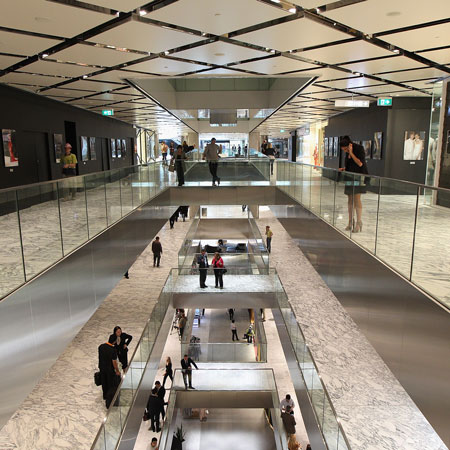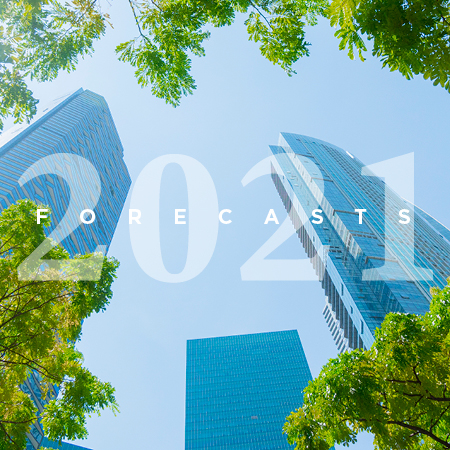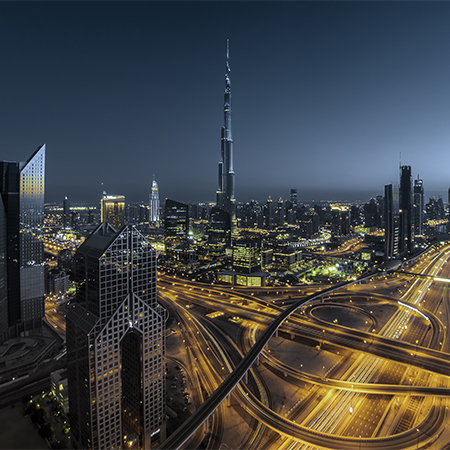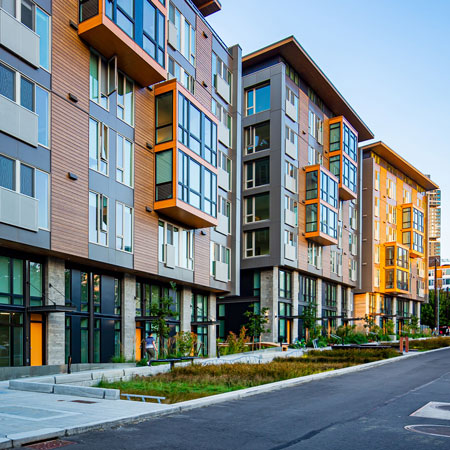Ecommerce is changing the way we shop. Connectivity and the ability to do our jobs remotely is changing the way we work. Health and wellbeing agendas are bringing to our attention the need to invest and engage better with our communities. Sustainability is driving the need to improve how far and how often we travel amid the urgent need to strive for smaller carbon footprints.
These trends are shaping urban development and the changing role of town and shopping centres is at the heart of this agenda. As the need for retail space contracts significantly, it leaves us with questions over what we do with underutilised or redundant spaces that no longer meet the needs they were designed for.
Nowhere will be immune to these headwinds as it becomes a genuine global phenomenon. The USA is well versed in these challenges. Many malls have been struggling for two decades due to over development, with a third of malls expected to fail.
In the UK, redundant retail space could reach 30 million sq m by 2030. Many department store chains across Europe are struggling, particularly in those countries with the highest internet penetration.
Hong Kong, has seen vacancy rates increase from 2% in 2018, to 15% in 2020 on one of the world’s most expensive retail streets and 10% within its district malls.
These issues touch all places, whether CBDs, small shopping parades or residential neighbourhoods. Yet, these vast structural changes are not just a challenge, they represent an opportunity should we choose to adapt.
Repurpose or redevelop?
Retail centres are complex and their future solutions are equally so. Property developers and investors are navigating their occupational and asset value woes by repurposing assets into a whole array of alternative uses – residential, workspaces, health and wellbeing, education as well as improved retail and leisure.
However, for many urban practitioners, truly sustainable repurposing means needing to stop seeing retail assets as islands and instead work out the relationships they have with other adjacent uses.
The 15-minute city concept may provide the solution. This is the idea that resilient and sustainable settlements provide communities with most things they need in their daily lives within a short walk. This creates better social cohesion, rechannelling demand for goods and services and addressing sustainability goals.
It sounds spectacular and something that would require a wholesale redesign of the urban infrastructure. In reality, it’s likely to be delivered via small steps, as many local authorities across the globe weave the concept into their masterplanning strategies. So, how do we repair the existing built environment?
The case for the 15-minute city
The concept of the 15-minute city is in direct contrast to the urban planning paradigms that have dominated for the last 100 years, where residential areas are separated from business, retail, industry and entertainment. The pandemic has demonstrated that real places don’t work like this and the siloed approach is becoming strained.
There is lots of evidence that people are most loyal to the places that they enjoy. However, if they only sleep or work in a particular place, there is no particular allegiance or relationship with the built or civic communities in which they live. The pandemic has demonstrated the societal benefits of bringing people and property uses back together.
Building social fabric
The need now is to move away from urban island environments that lack diversity of use or place. People are encouraged to increase the time they spend in their communities, but still reach out to other neighbourhoods and workers in order to collaborate, create and curate ideas.
In some schemes, such as U+I’s Mayfield development in Manchester, UK, it’s not just about creating a self-serving population within the development itself, but connecting and embedding the development within the existing communities.
Of course, it’s easier said than done. Over the past 50 years, we have built an infrastructure around car use, yet it’s acknowledged that we will need to rethink how we operate, not least to meet the challenging CO2 emission targets.
Sustainable transport has a big role to play. In Paris, their approach is designed to cut air pollution and hours lost to commuting, improving the quality of life for residents and helping the city to achieve its plan to become carbon neutral by 2050.
Other examples abound. Greater Manchester has released an ambitious plan to extend its cycle network to 1,800 miles. Bogotá and Berlin also plan for more bike lanes, while Seattle and San Francisco have ‘open streets’ and ‘slow streets’ programmes.
Flexible buildings and space
These various ideas will bring together a diverse range of town centre users and will increase footfall, vitality and encourage a more sustainable approach to society. Adapting places within these principles will build resilient communities. Connecting people with goods, services, communities and infrastructure will have a positive impact on property values.
Part of the solution is through increased residential provision. However, living spaces aren’t just about creating apartments for millennials. If we’re serious about creating sustainable communities, we need multiple generations living together. This clearly requires a rethink in how we build and configure developments to meet the housing needs of different life stages.
Town planners need to encourage the flexible use of buildings and public space. Employers need to facilitate remote working as appropriate to meet the requirements of workers, businesses and customers. Town centre stakeholders need to promote neighbourhood coworking spaces, invest in social, civic, health, wellbeing and public realm to help foster the more local, healthy and sustainable way of life that many of their citizens are calling for. Local government may have to engineer the masterplan strategy, but the private sector will be at the heart of delivery.
In short, we are all stakeholders and we can all be beneficiaries too. This will by no means spell the end of retail places altogether, but it may be the end of retail places as we know them.




